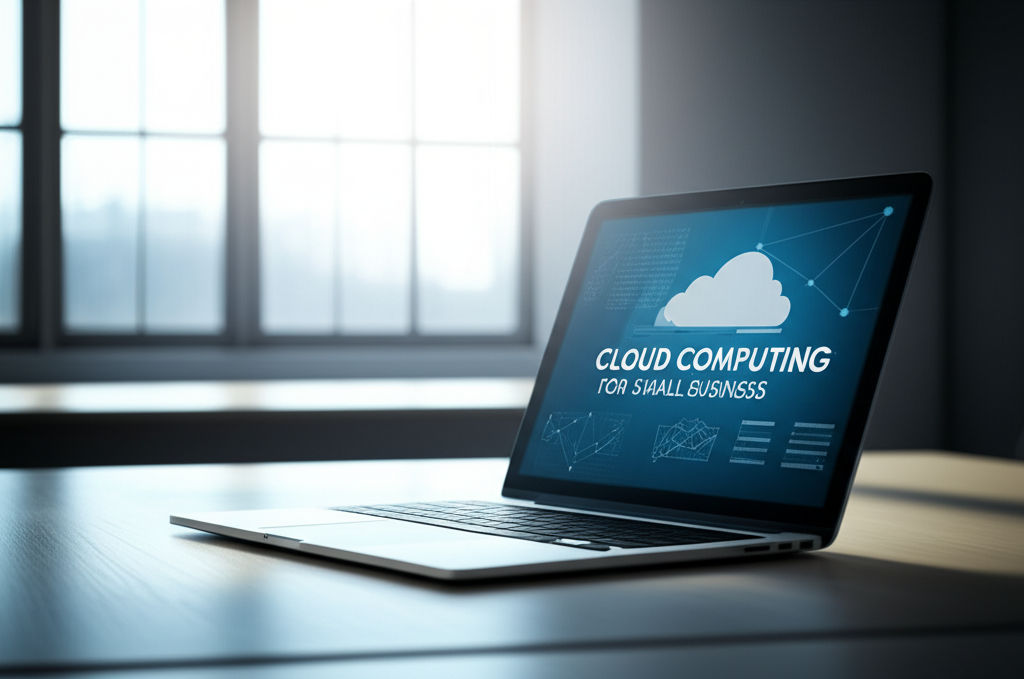Infrastructure Investment: Economic Growth
Emily Willis

Photo: Infrastructure Investment: Economic Growth
Building Tomorrow: How Infrastructure Investment Fuels Economic Growth
Imagine a nation's economy as a sprawling, intricate machine. For this machine to run smoothly, efficiently, and at its full potential, it requires a robust, well-maintained, and interconnected system of underlying components. These components are what we call infrastructure. From the roads that connect cities to the digital networks that power our global communication, infrastructure investment is not merely a cost; it's a strategic imperative, a powerful catalyst for economic growth and long-term prosperity.
In an increasingly competitive global landscape, the health of a nation’s infrastructure directly correlates with its economic vitality. This article will delve into the profound ways in which targeted infrastructure investment stimulates economies, creates jobs, enhances productivity, and ultimately improves the quality of life for all citizens.
The Foundational Role of Infrastructure
Before we explore the economic impact, let's clarify what we mean by infrastructure and why it's so critical.
What is Infrastructure?
Infrastructure refers to the fundamental physical and organizational structures and facilities needed for the operation of a society or enterprise. It encompasses a vast array of systems, including:
- Transportation networks: Roads, bridges, railways, airports, ports, and public transit systems.
- Utilities: Water supply, sanitation, wastewater treatment, and solid waste management.
- Energy systems: Power plants, electricity grids, and pipelines.
- Digital infrastructure: Broadband internet, fiber optic cables, and data centers.
- Social infrastructure: Schools, hospitals, and public buildings.
These elements are the silent backbone of modern life, enabling everything from daily commutes to complex global trade.
Why Invest? The Core Connection
Investing in infrastructure is crucial because it directly underpins economic activity and societal well-being. Without adequate infrastructure, economies face bottlenecks that stifle growth, increase costs, and reduce overall efficiency. Conversely, well-planned infrastructure development reduces costs, improves connectivity, and fosters innovation, serving as the "lifeline of a modern economy".
Historically, significant public investment in infrastructure has been a key factor in periods of sustained economic prosperity. For instance, President Eisenhower's decision to invest in public infrastructure in the 1950s is widely regarded as a major contributor to the era of American prosperity that followed.
How Infrastructure Fuels Economic Growth
Infrastructure investment contributes to economic growth through several interconnected channels, creating a ripple effect across various sectors.
Job Creation and Employment
One of the most immediate and tangible benefits of infrastructure spending is job creation. Large-scale construction projects, from highways to broadband networks, require a substantial workforce, generating both direct and indirect employment opportunities.
- Direct Jobs: These are positions directly involved in the construction, engineering, and maintenance of infrastructure projects. This includes roles for civil engineers, construction workers, electricians, and equipment operators.
- Indirect and Induced Jobs: Beyond direct construction, infrastructure projects stimulate demand in related industries (e.g., manufacturing of building materials, transportation services) and boost local economies as workers spend their wages, creating further jobs in retail, hospitality, and other service sectors.
Studies have shown the significant job-generating potential of infrastructure. For example, the Bipartisan Infrastructure Investment and Jobs Act (IIJA) in the US is projected to add approximately 600,000 jobs in 2024, with projections of 800,000 additional jobs by 2025, with over half in the construction sector. Globally, some estimates suggest that one percent of global GDP in public investment spending could create more than seven million jobs worldwide through direct employment effects alone. The job creation potential varies by sector and country, with water and sanitation, and rural road maintenance often having high short-term employment effects.
Boosting Productivity and Efficiency
High-quality infrastructure significantly enhances the productivity and efficiency of businesses and individuals.
- Reduced Costs and Time: Improved transportation networks, such as new highways or upgraded rail systems, reduce travel times and logistics costs for businesses, allowing goods to reach markets faster and more cheaply. This directly lowers the cost of doing business and increases profits.
- Streamlined Operations: Reliable energy grids ensure uninterrupted operations for industries, while advanced digital infrastructure facilitates faster communication and supports remote work, enabling businesses to operate more efficiently and effectively in a global market.
- Enhanced Connectivity: Better accessibility and connectivity attract new businesses, foster trade, and enable greater economic activity.
Research indicates that increased public capital stock, resulting from infrastructure investment, can significantly boost private-sector output. One review of studies found that every $100 spent on infrastructure boosts private-sector output by $13 (median) to $17 (average) in the long run.
Attracting Investment and Business Expansion
A robust infrastructure base signals a favorable business environment, attracting both domestic and foreign direct investment. Businesses are more likely to set up or expand operations in regions with reliable power, efficient transport, and high-speed internet. This influx of capital projects and business activity further stimulates economic growth. The presence of modern infrastructure reduces operational risks and costs, making a location more attractive for long-term capital investment.
Enhancing Trade and Connectivity
Efficient infrastructure is vital for facilitating trade, both domestically and internationally.
- Ports and Airports: Modernized ports and airports increase capacity and efficiency, making it easier and cheaper to import and export goods, thus boosting international trade and commerce.
- Digital Networks: High-speed internet and communication networks are essential for the digital economy, enabling e-commerce, global supply chain management, and remote collaboration, all of which contribute to expanded trade opportunities.
Improved connectivity also supports the development of various industries and regions, reducing logistical barriers that can hinder economic activities.
Improving Quality of Life and Social Equity
Beyond direct economic metrics, infrastructure investment has profound social benefits, enhancing the quality of life and promoting social equity.
- Access to Essential Services: Investments in social infrastructure like schools and hospitals, or in utilities like clean water and sanitation, improve public health, education outcomes, and overall well-being.
- Reduced Inequality: Strategic infrastructure initiatives can help bridge inequality gaps by improving access to essential services in underserved areas, fostering economic mobility, and empowering disadvantaged communities. For example, rural road projects can enable farmers to access urban markets, and digital infrastructure in remote regions can facilitate online learning and remote work.
Types of Infrastructure Investments
Infrastructure investment is not a monolithic concept; it encompasses diverse sectors, each with its unique contribution to economic growth.
Transportation Networks
This includes roads, bridges, railways, airports, and public transit. Investing in these areas reduces congestion, cuts travel times and costs, and improves the movement of goods and people. For instance, the Trans-Alaska Pipeline System (TAPS) significantly reduced oil transportation costs, leading to increased production and economic growth in Alaska. The Bipartisan Infrastructure Law in the US has earmarked $110 billion for roads and bridges and $39 billion for public transit improvements.
Energy Systems
Reliable and affordable energy is the lifeblood of industries and households. Investments in power plants, transmission lines, and renewable energy sources ensure a stable energy supply, reduce blackouts, and support industrial expansion. Green infrastructure, like smart grids and renewable energy projects, also contributes to sustainable growth and can create jobs in new sectors.
Digital Infrastructure
In the 21st century, digital connectivity is as crucial as physical roads. Investments in broadband, fiber optics, and 5G networks enable the digital economy, foster innovation, and improve productivity across all sectors. The COVID-19 pandemic underscored the critical role of digital infrastructure in maintaining connectivity and productivity. High-speed internet and reliable communication services allow businesses to operate more effectively, expand markets, and accelerate technology adoption.
Water and Sanitation
Access to clean water and effective sanitation systems is fundamental for public health and economic productivity. Investments in water treatment plants, pipelines, and wastewater management reduce illness, enhance livability, and support industrial processes.
Social Infrastructure
While often overlooked in purely economic discussions, investments in schools, hospitals, and public spaces contribute to human capital development and overall societal well-being, which are indirect yet powerful drivers of long-term economic growth.
Challenges and Considerations in Infrastructure Investment
While the benefits of infrastructure investment are clear, nations face several challenges in realizing these gains.
Funding Mechanisms
Many infrastructure projects require massive upfront capital, which can strain public budgets. Governments often explore various financing options, including taxes, grants, loans, user fees, and critically, Public-Private Partnerships (PPPs).
Long-term Planning and Sustainability
Infrastructure projects are long-term endeavors, requiring foresight and consistent policy. Ensuring that investments are sustainable, resilient to climate impacts, and inclusive for all community members is paramount. "Transformative infrastructure" provides lasting social and economic value for future generations.
Project Delays and Cost Overruns
Large-scale projects can be prone to delays, bureaucratic hurdles, and cost overruns. Streamlined approval processes and effective project management are essential to ensure projects are delivered on time and within budget. Some research suggests that while infrastructure spending can stimulate demand in the short term, its long-term impact on GDP can be offset if financed by additional government borrowing, highlighting the importance of efficient and well-managed investments.
Real-World Impact: Case Studies and Examples
The positive correlation between infrastructure investment and economic growth is evident in numerous real-world examples:
- Indonesia's National Strategic Projects (PSN) Scheme: Acknowledging the crucial role of infrastructure, Indonesia
Latest ✨
View AllRevolutionize your learning! Data analytics is the future of education, enabling personalized paths & unlocking individual potential.
Emily Willis
Cloud computing is essential for modern businesses, offering cost savings, scalability, and improved collaboration. Implementing cloud computing requires careful planning to ensure safety and efficiency. Tips for safe and efficient implementation include conducting a needs assessment, choosing the right cloud service model, prioritizing security, planning for data migration, optimizing costs, training your team, implementing backup and recovery solutions, monitoring performance, planning for scalability, and staying updated with industry trends.
Emily Willis
effective leadership in a constantly changing world and explores the traits and habits of inspiring leaders, both historical and contemporary. It highlights the key lessons from leaders such as Nelson Mandela, Martin Luther King Jr., Jacinda Ardern, Elon Musk, and Malala Yousafzai.
Emily Willis
Customer feedback is a goldmine for business growth. Learn how leveraging insights enhances products, builds loyalty, and keeps you competitive.
Emily Willis
Business
View All
June 9, 2025
Cloud Computing for Small BusinessUnlock growth & efficiency! Discover how cloud computing empowers small businesses with cost savings & agility in the digital age.
Emily Willis

June 9, 2025
Customer Retention Strategies That WorkUnlock lasting success! Learn proven customer retention strategies to build loyalty, reduce churn, and boost your business growth.
Emily Willis

June 8, 2025
Strategic Planning for Long-Term WinsChart your course to enduring success! This article demystifies strategic planning, offering an actionable framework for long-term wins and sustainable growth.
Emily Willis
Economy
View AllBoost your business profits! Discover actionable strategies to maximize revenue and efficiently manage costs for sustainable growth.
Read MoreUnpack the 17 Sustainable Development Goals (SDGs): a global blueprint addressing poverty, climate change, and inequality for a sustainable future.
Read MoreThe COVID-19 pandemic has had a significant impact on the global economy, leading to market turmoil, disrupted supply chains, and widespread business closures. As countries slowly recover, there are questions about the future of the global economy. While there are signs of recovery, challenges such as rising inflation, uneven global recovery, labor market disruptions, and supply chain bottlenecks remain. To ensure a sustainable recovery, policymakers must continue to support vulnerable sectors, invest in education and reskilling, strengthen healthcare systems, promote supply chain resilience, address inequalities, and prioritize sustainability.
Read MoreEntertainment
View All
August 4, 2024
The Latest Music Trends, Artists Influencing Pop Culture, and How Digital Platforms Facilitate the Distribution of Music GloballyThe music industry is constantly changing due to consumer preferences, technology, and the influence of artists. Digital platforms have revolutionized music creation, distribution, and consumption, leading to genre fusion, the rise of independent artists, and collaborative projects. Influential artists like Billie Eilish, BTS, and Taylor Swift have shaped pop culture globally. Streaming services, social media, and direct-to-fan engagement have transformed music distribution. Digital platforms also promote cultural diversity and inclusivity, expand markets and revenue, and drive technological advancements. The industry is also focusing on sustainability and ethical practices. To succeed in the future, stakeholders must embrace digital transformation and champion inclusivity.
Emily Willis

August 4, 2024
The Evolution of Streaming Services Such as Netflix, Disney+, Hulu, and the Implications for the Traditional Entertainment IndustryThe rise of streaming services has revolutionized the entertainment industry, offering on-demand access to a vast library of content through internet-connected devices. Platforms like Netflix, Disney+, and Hulu have diversified their content libraries, reshaped consumer behavior, and challenged traditional distribution models. Technological advancements have enhanced streaming experiences, while economic and cultural implications have led to global market expansion and increased investment in original content production. The future of the streaming industry will be shaped by competition, convergence of media and technology, and the need for adaptation to changing consumer preferences. Embracing digital transformation and strategic partnerships will be crucial for stakeholders in navigating the evolving landscape of modern entertainment.
Emily Willis

August 5, 2024
Entertainment in Society: Social Impact, Cultural Influence, Economic ContributionsEntertainment is more than just a way to pass the time it has a significant impact on society, culture, and the economy. It promotes empathy, sparks conversations, and drives social change. It reflects and shapes cultural trends, while also preserving traditions. The entertainment industry generates jobs, contributes to economic growth, and drives technological innovation.
Emily Willis
Health
View Allsignificance of mental health awareness in today's fast-paced world. It discusses the importance of understanding mental health, breaking down stigma, and promoting positive mental health practices.
Emily Willis
Regular physical activity is crucial for maintaining long-term health and well-being. It has numerous benefits, including improving cardiovascular health, aiding in weight management, enhancing mental health, strengthening bones, boosting immune function, and promoting longevity.
Emily Willis
The healthcare landscape is being transformed by technological advancements, with telehealth and remote care providing convenient access to healthcare services. Artificial intelligence is revolutionizing diagnostics, personalized medicine, and drug discovery. Wearable technology is empowering patients to take control of their health.
Emily Willis
Trending 🔥
View All
1
2
3
4
6
7
8
9
10
Lifestyle



Sports
View AllAugust 5, 2024
Inclusive Playing Field: Creating a Welcoming and Accessible Sports Environment
Read MoreTechnology
View All
August 4, 2024
The Future of Artificial Intelligence: Opportunities and Challenges
opportunities and challenges presented by Artificial Intelligence (AI) in various sectors such as efficiency, customer experiences, healthcare, education, and economic growth. It highlights the need to address ethical considerations, job displacement, privacy issues, security risks, and regulatory challenges associated with AI.

August 5, 2024
Best AR Apps for Interior Design
Discover the top AR apps for interior design and transform your space with ease! From furniture placement to paint colors, these innovative tools will revolutionize the way you decorate, making your home design dreams a reality

August 5, 2024
Types of Cloud Computing Services Available
Cloud computing has become essential for modern businesses, offering services that streamline processes, reduce costs, and increase flexibility. Understanding the types of cloud computing services available, such as Infrastructure as a Service (IaaS), Platform as a Service (PaaS), and Software as a Service (SaaS), can help businesses make informed decisions.

August 5, 2024
Best AR Translation Apps Tested
Uncover the best AR translation apps on the market through our in-depth testing and reviews. From seamless voice conversations to real-world text translation, these apps will revolutionize the way you communicate across languages.

















